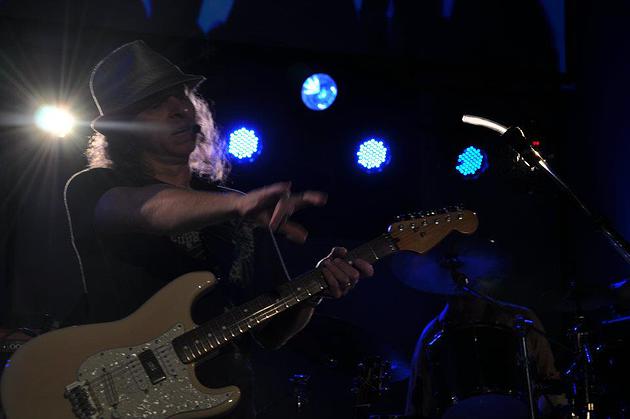Your Cart is Empty
NOW FREE SHIPPING TO 48 CONTIGUOUS UNITED STATES ON ALL ORDERS!!!
One Thing You Can Do in LESS THAN A SECOND to Improve Your Guitar Tone
by vaughn skow January 29, 2015 2 min read

Stand farther from your amp.
Okay, there ya go. If you want the VERY short version, read no “farther”. If you want to know WHY … well then, read on!
Reason #1: because your ears are not on the back of your knees. So, a band I play with regularly rehearses in a hall that has a pair of half-stack Marshalls on one side of the stage. Since electric guitar players are a dime-a-dozen in the Nashville area, I usually am on the far side of the room playing acoustic guitar or keys. Guess what? Those dang Marshall’s are WAY louder where I’m standing than where the dudes playing through them are standing … and what’s worse? The tone is razor thin and harsh. . Why? Simple, because human ears are on the HEAD, not the back of the knees. Those dudes standing a couple of feet in front of the half stacks are having their LEGS blasted … but the sound of those closed-back lasers takes ten feet MINIMUM to reach ear-level. And, since HIGHER frequencies are very directional, and LOW frequencies are not … dudes THINK their tone is big & full when ten or twenty feet out it’s like an icepick being driven in your ear. UGG! Friends, your butt may be able to FEEL low frequencies, but it sure as heck can’t HEAR highs!
Reason #2: because NOBODY in your audience is going to be listening with their head only a foot or two from your amp! Seriously! When I teach audio engineering/mixing I always impress upon my students the importance of monitoring in a fashion that as closely as possible recreates the manner in which the end user will listen. Same goes for an electric guitar player on stage. Let’s say you are playing through an amp like my favorite, a Super Reverb, with the ability to angle up. Cool, that way you avoid the “only hits your knees” thing … BIG improvement! But wait, there’s more. If you are practically standing on top of the amp, you are not going to be hearing a tone that’s anything like the rest of the room is hearing. So, darn it, just step back a few feet and it’s “problem solved”.
One last note. An open-back amp or cabinet with its inherent ability to scatter sound around is much, MUCH more forgiving than a closed-back cabinet where either of my reasons are concerned, so unless you are playing BIG stages, stick to open-back cabs whenever possible.
Leave a comment
Comments will be approved before showing up.
